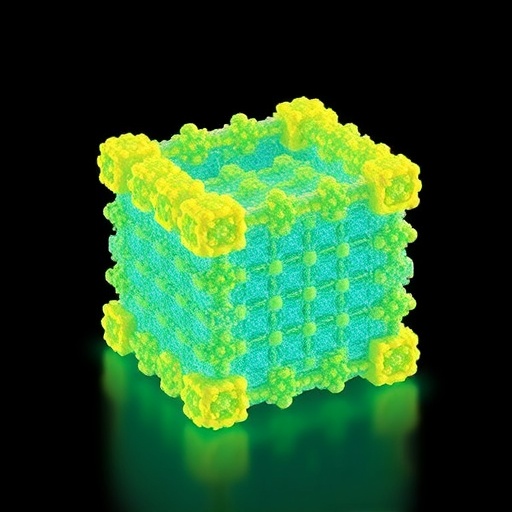Recent advancements in the field of energy storage technologies have sparked considerable interest among researchers looking to enhance the performance and efficiency of supercapacitors. As global demand for energy alternatives increases in a world that is progressively leaning toward renewable energy sources, innovative materials capable of efficient energy storage play a pivotal role. In this context, the development of porous composites combining Y2O3 and FeWO4 shines a light on the future capabilities of supercapacitors, as explored in the groundbreaking research conducted by Xu, Wu, and Tan, published in the journal Ionics.
The ability of materials to store energy efficiently can significantly influence the performance of devices such as smartphones, electric vehicles, and renewable energy systems, making the search for optimal candidates a priority in the scientific community. In their recent paper, the authors have reported on the preparation of porous Y2O3/FeWO4 composites and detailed their studies on the properties of supercapacitors based on these composites. The establishment of a robust energy storage system requires materials that not only store charge but also facilitate rapid charge and discharge cycles, two critical areas where this new composite shows promise.
Yttrium oxide (Y2O3) and iron tungstate (FeWO4) are two materials with unique electrical and chemical properties that make them suitable for energy storage applications. Y2O3 is known for its high dielectric constant, along with excellent chemical stability and conductivity. These features contribute to making it an interesting candidate as a matrix material in composite structures. In tandem, FeWO4 possesses great electrochemical characteristics and can significantly enhance the conductivity when incorporated with other materials, such as Y2O3.
In creating this composite, Xu and colleagues utilized a rigorous preparation method to ensure the porosity and structural integrity of the Y2O3/FeWO4 blend. The porous nature of the composite is essential as it increases the available surface area for electrochemical reactions, thereby enhancing the overall energy storage capacity. The authors employed methods such as sol-gel synthesis and controlled sintering to achieve optimal structural configuration. The resultant materials display a high surface area, offering an expanded space for charge storage.
One of the critical aspects examined by the researchers was the electrochemical performance of the newly synthesized porous composites. Through a series of electrochemical tests, including cyclic voltammetry and galvanostatic charge-discharge tests, the researchers evaluated crucial performance metrics. The preliminary results indicate that the Y2O3/FeWO4 composites exhibit remarkable capacitance values and excellent energy density, placing them in a competitive position against traditional supercapacitor materials.
The findings suggest that these porous composites can be leveraged for various energy storage applications, ranging from portable electronics to larger-scale energy systems, to meet the growing demand for efficient and sustainable energy solutions. A deeper insight into the charge-storage mechanisms further revealed that the synergistic effects of Y2O3 and FeWO4 contribute to reduced charge transfer resistance, enhancing the overall efficiency of the electrochemical reactions within the supercapacitor.
In a bid to further understand the long-term viability of the Y2O3/FeWO4 composites, the researchers conducted extensive durability tests to ascertain the stability of the materials over multiple charging and discharging cycles. The exhibited stability speaks volumes about the potential for commercialization of these composites in real-world applications. The implementation of these advanced materials could lead to performance breakthroughs in supercapacitor technology.
Moreover, the research emphasizes the need for further exploration into the optimization of composite design to maximize energy storage capabilities. The authors encourage future investigations into varying compositions and synthesis methods to fine-tune the properties of the Y2O3/FeWO4 composites. Such investigations could unlock new pathways for enhancing supercapacitor performance, setting the stage for a new era of energy storage technology.
The integration of Y2O3 and FeWO4 is not merely an incremental improvement but represents a significant leap toward achieving even higher efficiency in supercapacitor applications. As the world continues to transition towards renewable energy sources, innovations such as these will be crucial to alleviating the limitations currently faced by existing energy storage technologies.
Overall, the preparatory processes and subsequent studies conducted on porous Y2O3/FeWO4 composites shed light on the significant advancement in energy storage solutions. The efforts made by Xu, Wu, and Tan illustrate the transformative potential of emerging materials in tackling the challenges of modern energy needs. With their research, they contribute not only to the academic field but also to the practical applications that stand to improve the technologies underpinning our energy systems.
As researchers continue to explore the synergies between various compounds, the evolving landscape of energy storage will likely open doors to novel solutions and sustainable technologies. Thus, the journey embarked upon in this study is just the beginning of a larger quest fueled by innovation, creativity, and scientific rigor in the relentless pursuit of enhanced energy storage materials.
As we delve deeper into the specifics of these porous composites and their applications, it becomes clear that the future of supercapacitor technology might very well hinge on the advancements made within materials science. In this light, it will be fascinating to watch how efforts like these unfold and ultimately shape our approach to energy conservation and efficiency in an ever-demanding world.
Subject of Research: Preparation and properties of porous Y2O3/FeWO4 composites for supercapacitor applications.
Article Title: Preparation of porous Y2O3/FeWO4 composites and study on properties of supercapacitors.
Article References:
Xu, J., Wu, Z. & Tan, C. Preparation of porous Y2O3/FeWO4 composites and study on properties of supercapacitors. Ionics (2025). https://doi.org/10.1007/s11581-025-06553-1
Image Credits: AI Generated
DOI: https://doi.org/10.1007/s11581-025-06553-1
Keywords: supercapacitors, energy storage, porous composites, Yttrium oxide, iron tungstate, electrochemical performance, renewable energy.




